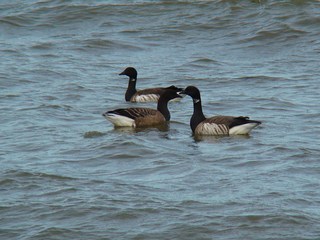 A fundamental aspect of seaworthiness, but one which a yachtsman may forget, is reserve buoyancy. A square rigger deeply laden with cargo did indeed "batten the hatches" before going to sea, for if a hatch gave way in heavy weather the ship would likely founder. Modern sailing yachts are light, with ample freeboard, and thus can take on a good deal of water before going under.
A fundamental aspect of seaworthiness, but one which a yachtsman may forget, is reserve buoyancy. A square rigger deeply laden with cargo did indeed "batten the hatches" before going to sea, for if a hatch gave way in heavy weather the ship would likely founder. Modern sailing yachts are light, with ample freeboard, and thus can take on a good deal of water before going under.Samuel Plimsoll (1824 - 1898) was a member of the British Parliament who worked for the safety of mariners, work which led to a law requiring a mark on the side of every British ship beyond which it could not be loaded. The U.S. adopted the practice in 1929 (Load Line Act of 1929), and the Load Line Convention of 1966 has been adopted by almost all maritime nations.
The modern Plimsoll Mark is depicted above. A ship floats lower in fresh water, which is about 97% as heavy per unit volume as seawater, so a ship leaving the Caribean to enter the fresh water of the Panama Canal's Lake Gatun will lose considerable freeboard. It is interesting to note that Winter North Atlantic requires the most freeboard - the most reserve buoyancy - evidence of the awful conditions met by ships on that run.
The bisected circle to the left of the Plimsoll Mark carries the initials of the ship's classification society, whether American Bureau of Shipping (ABS), Bureau Veritas or, in the case of the illustration, Lloyd's Register.
In the U.S., commercial ships greater than 79 feet in length and engaged in foreign trade must have a marked load line, and carry a load line certificate. The actual certification is undertaken by the ABS. U.S. Naval ships are exempt from load line regulations, but they do carry an amidships mark which limits loading. It looks like an asterix.
Professional Mariner magazine gives the annual Plimsoll Award: "The Plimsoll marks on ships today are an enduring testimony to his tireless pursuit of safety at sea. Professional Mariner proudly presents its Plimsoll Awards each year to individuals and organizations that embody the spirit of Samuel Plimsoll." So great was Samuel Plimsoll's contribution to the safety of life at sea.
 Bird names make good boat names - Herreshoff's Meadowlark, Shearwater and countless others come to mind - but I don't think I have seen a transom bearing the name Brant. Brant has a good bold sound, a bit in your face; I like it.
Bird names make good boat names - Herreshoff's Meadowlark, Shearwater and countless others come to mind - but I don't think I have seen a transom bearing the name Brant. Brant has a good bold sound, a bit in your face; I like it.





















